

The avifauna of
Fiji
Fiji ( , ,; fj, Viti, ; Fiji Hindi: फ़िजी, ''Fijī''), officially the Republic of Fiji, is an island country in Melanesia, part of Oceania in the South Pacific Ocean. It lies about north-northeast of New Zealand. Fiji consists ...
is the richest in West
Polynesia. Numerous families reach the farthest east of their range, and the island is home to several
endemic species and
genera
Genus ( plural genera ) is a taxonomic rank used in the biological classification of living and fossil organisms as well as viruses. In the hierarchy of biological classification, genus comes above species and below family. In binomial nomenclat ...
, as well as sharing several more endemics with its close neighbours
Tonga and
Samoa.
The birds of Fiji have been heavily impacted by the arrival of humans. Several species (and some genera) were
lost in prehistory and are known only from
fossil remains. Other have become extinct more recently, and some species remain very close to extinction. It is certain that the current knowledge of the previous ranges of many species is incomplete and further research is needed.
This is a list of the bird species recorded in Fiji. The avifauna of
Fiji
Fiji ( , ,; fj, Viti, ; Fiji Hindi: फ़िजी, ''Fijī''), officially the Republic of Fiji, is an island country in Melanesia, part of Oceania in the South Pacific Ocean. It lies about north-northeast of New Zealand. Fiji consists ...
include a total of 179 species, of which 31 are
endemic, and 13 have been
introduced by humans. Numerous species listed have been
extirpated from Fiji.
This list's
taxonomic
Taxonomy is the practice and science of categorization or classification.
A taxonomy (or taxonomical classification) is a scheme of classification, especially a hierarchical classification, in which things are organized into groups or types. ...
treatment (designation and sequence of orders, families and species) and nomenclature (common and scientific names) follow the conventions of ''
The Clements Checklist of Birds of the World'', 2022 edition. The family accounts at the beginning of each heading reflect this taxonomy, as do the species counts found in each family account. Introduced and accidental species are included in the total counts for Fiji. There are also a few species listed that have been recorded in Fiji, but not known to what specific island they were recorded at.
The following tags have been used to highlight several categories.
* (V)
Vagrant
Vagrancy is the condition of homelessness without regular employment or income. Vagrants (also known as bums, vagabonds, rogues, tramps or drifters) usually live in poverty and support themselves by begging, scavenging, petty theft, temporar ...
- a species that rarely or accidentally occurs in Fiji
* (B) Breeder - a species that breeds in Fiji
* (M)
Migrant - a species that regularly migrates to Fiji
* (P) Passage migrant - a species that neither breeds nor winters in Fiji but regularly passes through
* (I)
Introduced - a species introduced to Fiji as a consequence, direct or indirect, of human actions
* (X)
Extirpated - a species that no longer occurs here although populations may exist elsewhere
* (*)
Endemic - a species that is endemic to Fiji
* (?) Uncertain - a species with uncertain records or current status
Ducks, geese, and waterfowl

Order:
Anseriformes
Anseriformes is an order of birds also known as waterfowl that comprises about 180 living species of birds in three families: Anhimidae (three species of screamers), Anseranatidae (the magpie goose), and Anatidae, the largest family, which in ...
Family:
Anatidae
Anatidae includes the
ducks and most duck-like waterfowl, such as
geese and
swan
Swans are birds of the family (biology), family Anatidae within the genus ''Cygnus''. The swans' closest relatives include the goose, geese and ducks. Swans are grouped with the closely related geese in the subfamily Anserinae where they form t ...
s. These birds are adapted to an aquatic existence with webbed feet, flattened bills, and feathers that are excellent at shedding water due to an oily coating.
Megapodes
Order:
GalliformesFamily:
Megapodiidae
The Megapodiidae are stocky, medium-large chicken-like birds with small heads and large feet. All but the
malleefowl occupy jungle habitats and most have brown or black colouring.
Sylviornithids
Pangalliformes
Pangalliformes is the scientific name of a provisional clade of birds within the group Galloanserae. It is defined as all birds more closely related to chickens than to ducks, and includes all modern chickens, turkeys, pheasants, and megapodes, ...
Family:
Sylviornithidae
Sylviornithidae is an extinct family of flightless birds, known from subfossil bones found in Holocene aged deposits on the Melanesian islands of New Caledonia and Fiji. Traditionally assumed to be within Galliformes, recent phylogenetic studies ...
Sylviornithids are an extinct lineage of flightless birds related to modern
Galliformes. They are represented by two species, one of them native to Fiji.
Pheasants, grouse, and allies
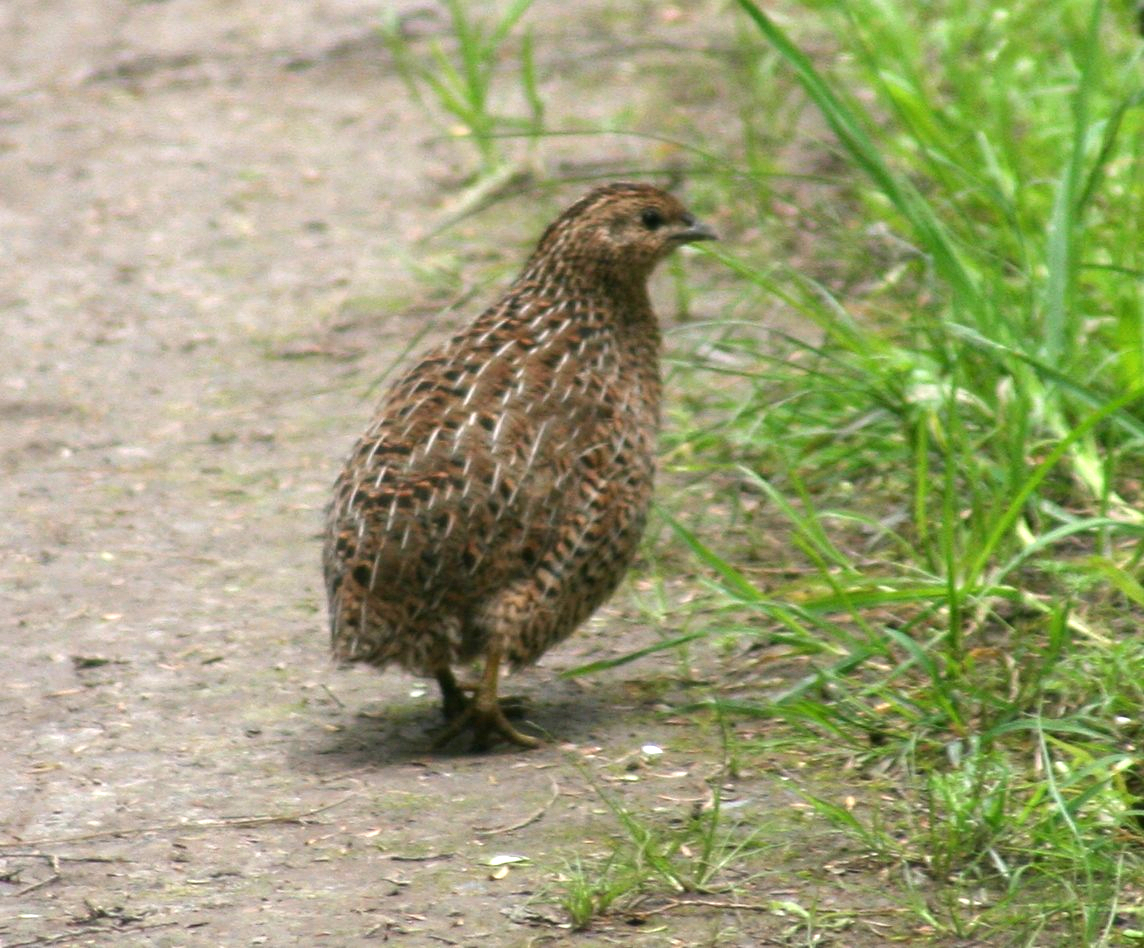
Order:
GalliformesFamily:
Phasianidae
The Phasianidae are a family (biology), family of heavy, ground-living birds, which includes pheasants, partridges, junglefowl, chickens, Turkey bird, turkeys, Old World quail, and peafowl. The family includes many of the most popular Game (hunti ...
The Phasianidae are a family of terrestrial birds. In general, they are plump (although they vary in size) and have broad, relatively short wings.
Pigeons and doves


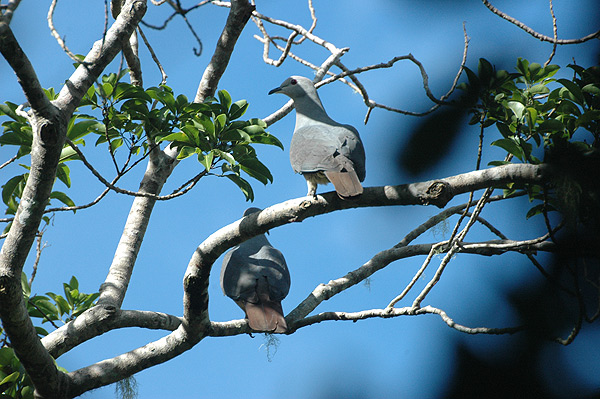
Order:
ColumbiformesFamily:
Columbidae
Pigeons and
doves are stout-bodied birds with short necks and short slender bills with a fleshy
cere.
Cuckoos

Order:
CuculiformesFamily:
Cuculidae
The family Cuculidae includes
cuckoos,
roadrunners
The roadrunners (genus ''Geococcyx''), also known as chaparral birds or chaparral cocks, are two species of fast-running ground cuckoos with long tails and crests. They are found in the southwestern and south-central United States and Mexico, us ...
and
anis
Anis ( ar, أنيس) is a masculine given name. The meaning of the name Anis is "genial" or "close friend".
People In arts
* Anis Mohamed Youssef Ferchichi, German rapper known as Bushido
* Anis Haffar, educational theorist, teacher, columnist ...
. These birds are of variable size with slender bodies, long tails and strong legs. The Old World cuckoos are
brood parasite
Brood parasites are animals that rely on others to raise their young. The strategy appears among birds, insects and fish. The brood parasite manipulates a host, either of the same or of another species, to raise its young as if it were its own ...
s.
Frogmouths
Order:
CaprimulgiformesFamily:
Podargidae
The frogmouths are a group of nocturnal birds related to the
nightjars. They are named for their large flattened hooked bill and huge frog-like gape, which they use to take insects.
Swifts

Order:
CaprimulgiformesFamily:
Apodidae
Swifts are small birds which spend the majority of their lives flying. These birds have very short legs and never settle voluntarily on the ground, perching instead only on vertical surfaces. Many swifts have long swept-back wings which resemble a crescent or boomerang.
Rails, gallinules, and coots

Order:
Gruiformes
The Gruiformes are an order (biology), order containing a considerable number of living and extinct bird family (biology), families, with a widespread geographical diversity. Gruiform means "crane-like".
Traditionally, a number of wading and t ...
Family:
Rallidae
Rallidae is a large family of small to medium-sized birds which includes the
rails,
crake
The rails, or Rallidae, are a large cosmopolitan family of small- to medium-sized, ground-living birds. The family exhibits considerable diversity and includes the crakes, coots, and gallinules. Many species are associated with wetlands, althoug ...
s,
coots and
gallinules. Typically they inhabit dense vegetation in damp environments near lakes, swamps or rivers. In general they are shy and secretive birds, making them difficult to observe. Most species have strong legs and long toes which are well adapted to soft uneven surfaces. They tend to have short, rounded wings and to be weak fliers.
Plovers and lapwings

Order:
CharadriiformesFamily:
Charadriidae
The family Charadriidae includes the
plovers,
dotterels and
lapwings. They are small to medium-sized birds with compact bodies, short, thick necks and long, usually pointed, wings. They are found in open country worldwide, mostly in habitats near water.
Sandpipers and allies
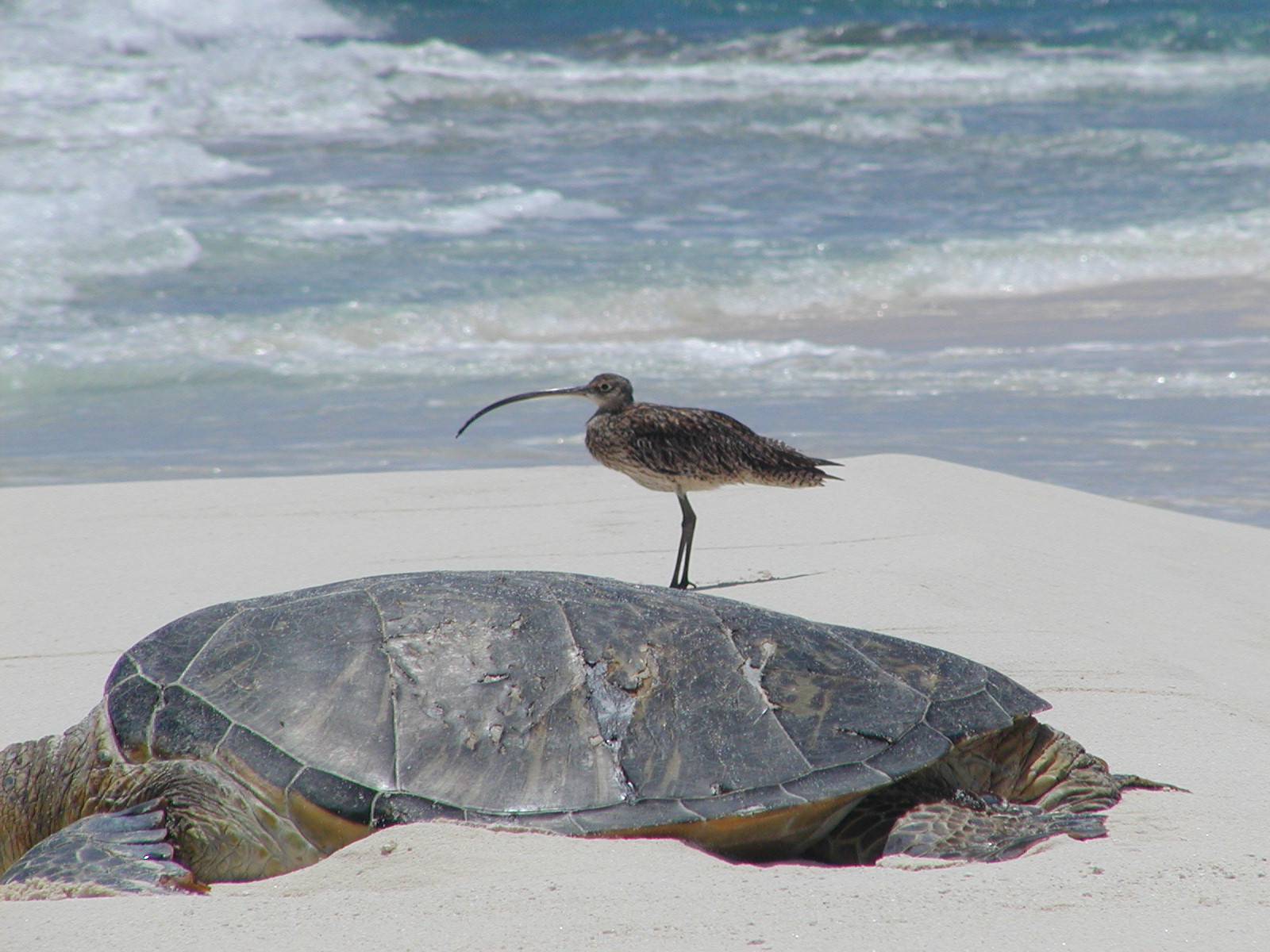
Order:
CharadriiformesFamily:
Scolopacidae
Scolopacidae is a large diverse family of small to medium-sized shorebirds including the
sandpipers,
curlews,
godwits,
shanks,
tattlers,
woodcocks,
snipes,
dowitchers and
phalaropes. The majority of these species eat small invertebrates picked out of the mud or soil. Variation in length of legs and bills enables multiple species to feed in the same habitat, particularly on the coast, without direct competition for food.
Skuas and jaegers
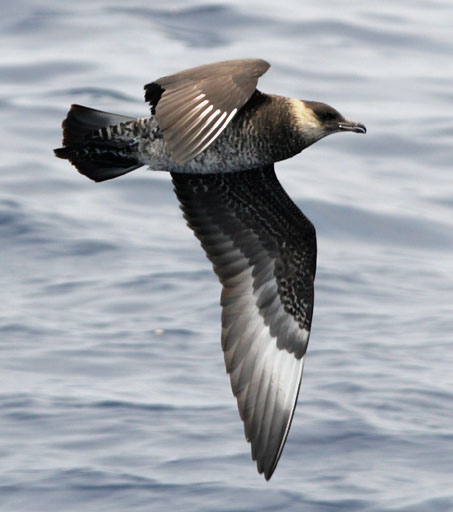
Order:
CharadriiformesFamily:
Stercorariidae
The family Stercorariidae are, in general, medium to large birds, typically with grey or brown plumage, often with white markings on the wings. They nest on the ground in temperate and arctic regions and are long-distance migrants.
Gulls, terns, and skimmers
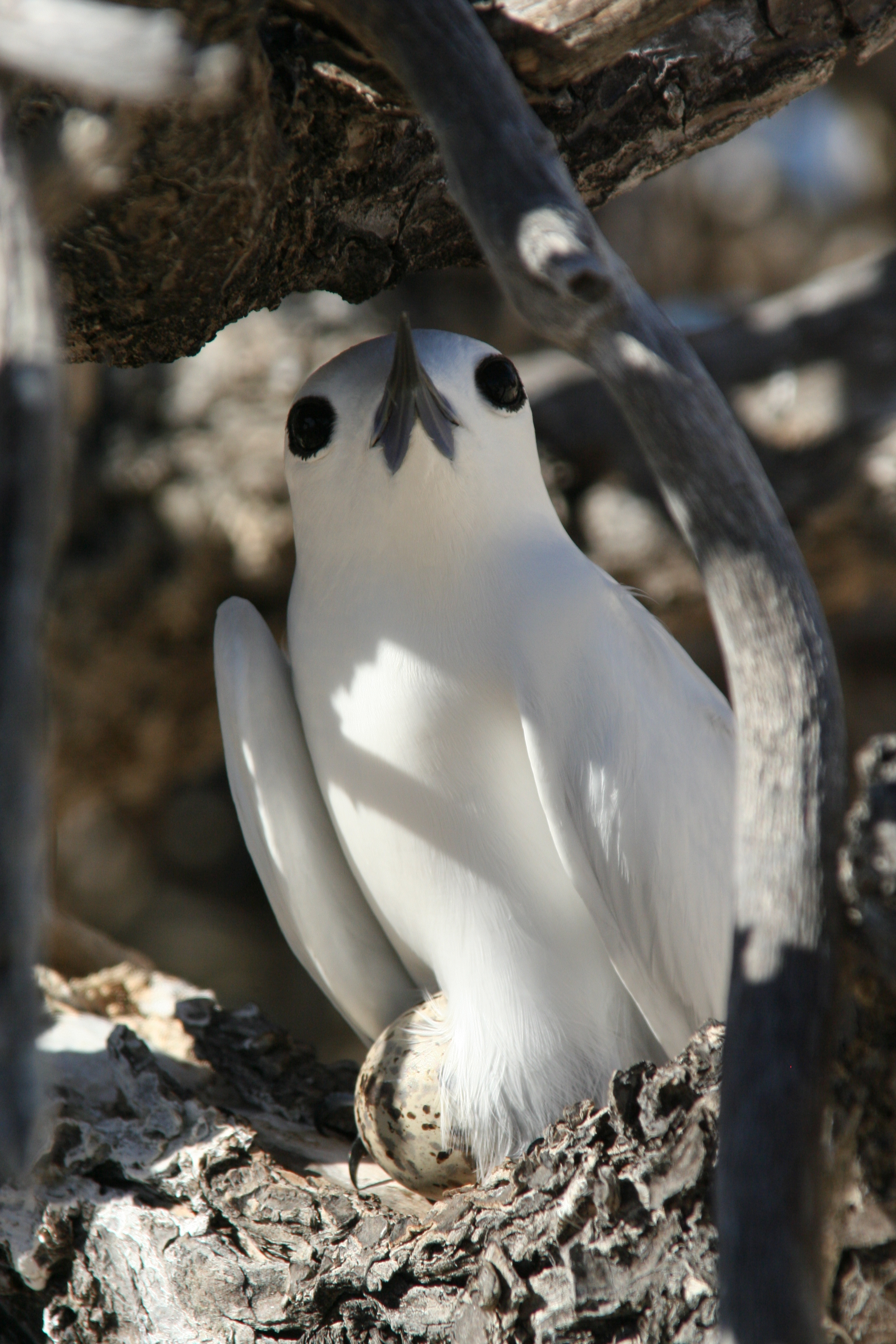
Order:
CharadriiformesFamily:
Laridae
Laridae is a family of medium to large seabirds, the
gulls,
terns, and
skimmer
Skimmer may refer to: Animals
*Skimmer (bird), a common name for birds in the genus ''Rynchops''
*Skimmer (dragonfly), a common name for dragonflies in the family Libellulidae
*Water strider or skimmer, a common name for insects in the family Ge ...
s. Gulls are typically grey or white, often with black markings on the head or wings. They have stout, longish bills and webbed feet. Terns are a group of generally medium to large seabirds typically with grey or white plumage, often with black markings on the head. Most terns hunt fish by diving but some pick insects off the surface of fresh water. Terns are generally long-lived birds, with several species known to live in excess of 30 years.
Tropicbirds

Order:
PhaethontiformesFamily:
Phaethontidae
Tropicbirds are slender white birds of tropical oceans, with exceptionally long central tail feathers. Their heads and long wings have black markings.
Albatrosses
Order:
ProcellariiformesFamily:
Diomedeidae
The albatrosses are among the largest of flying birds, and the great albatrosses from the genus ''Diomedea'' have the largest wingspans of any extant birds.
Southern storm-petrels

Order:
ProcellariiformesFamily:
Oceanitidae
The southern storm-petrels are relatives of the
petrels and are the smallest seabirds. They feed on
planktonic crustaceans and small fish picked from the surface, typically while hovering. The flight is fluttering and sometimes
bat-like.
Northern storm-petrels
Order:
ProcellariiformesFamily:
Hydrobatidae
Though the members of this family are similar in many respects to the southern storm-petrels, including their general appearance and habits, there are enough genetic differences to warrant their placement in a separate family.
Shearwaters and petrels
Order:
ProcellariiformesFamily:
Procellariidae
The procellariids are the main group of medium-sized "true petrels", characterised by united nostrils with medium septum and a long outer functional primary.



Frigatebirds
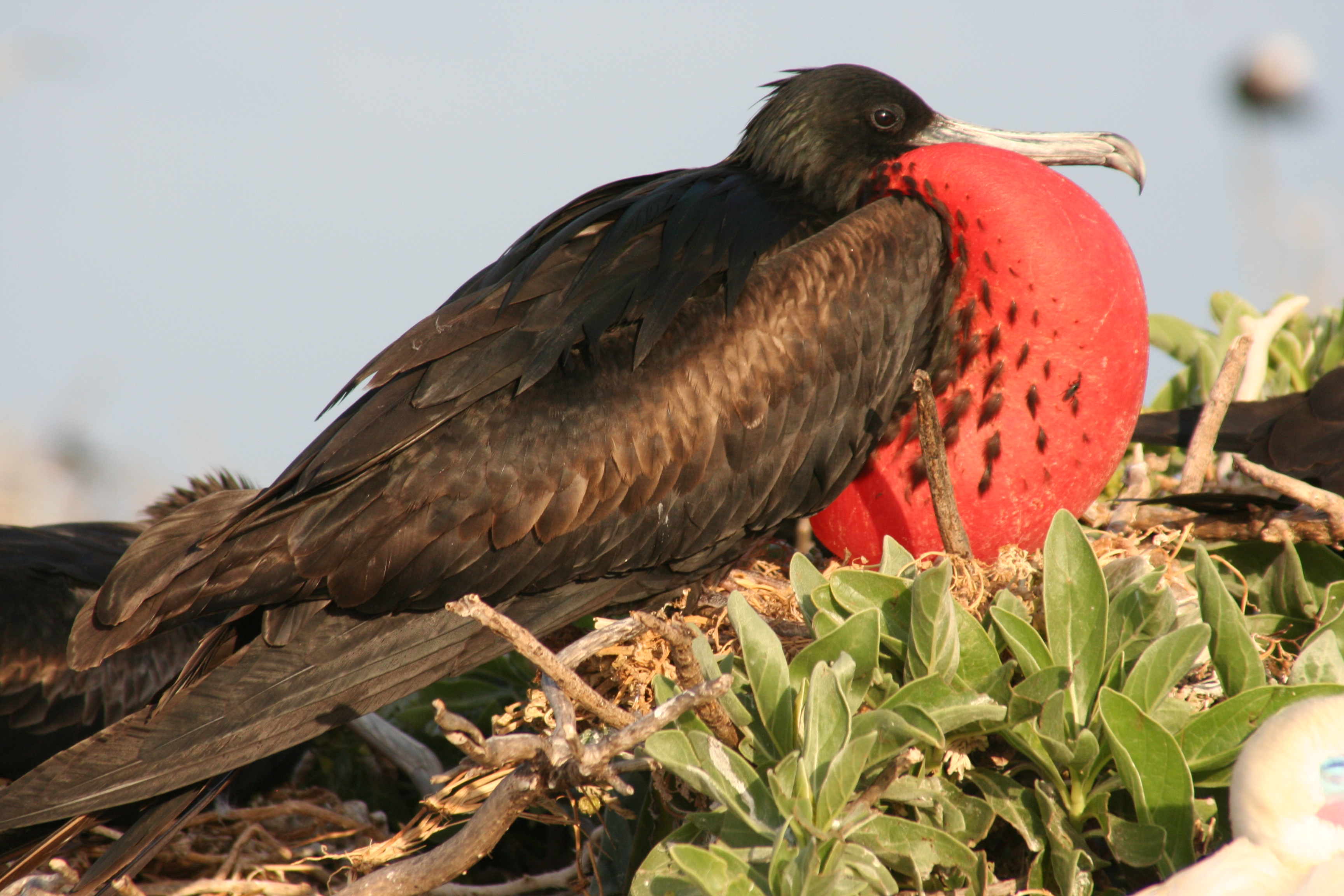
Order:
SuliformesFamily:
Fregatidae
Frigatebirds are large seabirds usually found over tropical oceans. They are large, black-and-white or completely black, with long wings and deeply forked tails. The males have coloured inflatable throat pouches. They do not swim or walk and cannot take off from a flat surface. Having the largest wingspan-to-body-weight ratio of any bird, they are essentially aerial, able to stay aloft for more than a week.
Boobies and gannets

Order:
SuliformesFamily:
Sulidae
The sulids comprise the
gannets and
boobies. Both groups are medium to large coastal seabirds that plunge-dive for fish.
Pelicans
Order:
PelecaniformesFamily:
Pelecanidae
Pelican
Pelicans (genus ''Pelecanus'') are a genus of large water birds that make up the family Pelecanidae. They are characterized by a long beak and a large throat pouch used for catching prey and draining water from the scooped-up contents before s ...
s are large water birds with a distinctive pouch under their beak. As with other members of the order Pelecaniformes, they have webbed feet with four toes.
Herons, egrets, and bitterns

Order:
PelecaniformesFamily:
Ardeidae
The family Ardeidae contains the
bitterns,
heron
The herons are long-legged, long-necked, freshwater and coastal birds in the family Ardeidae, with 72 recognised species, some of which are referred to as egrets or bitterns rather than herons. Members of the genera ''Botaurus'' and ''Ixobrychus ...
s and
egrets. Herons and egrets are medium to large wading birds with long necks and legs. Bitterns tend to be shorter necked and more wary. Members of Ardeidae fly with their necks retracted, unlike other long-necked birds such as storks, ibises and spoonbills.
Ibises and spoonbills
Order:
PelecaniformesFamily:
Threskiornithidae
Threskiornithidae is a family of large terrestrial and wading birds which includes the
ibises and
spoonbill
Spoonbills are a genus, ''Platalea'', of large, long-legged wading birds. The spoonbills have a global distribution, being found on every continent except Antarctica. The genus name ''Platalea'' derives from Ancient Greek and means "broad", refe ...
s. They have long, broad wings with 11 primary and about 20 secondary feathers. They are strong fliers and despite their size and weight, very capable soarers.
Hawks, eagles, and kites

Order:
AccipitriformesFamily:
Accipitridae
Accipitridae is a family of birds of prey, which includes
hawk
Hawks are bird of prey, birds of prey of the family Accipitridae. They are widely distributed and are found on all continents except Antarctica.
* The subfamily Accipitrinae includes goshawks, sparrowhawks, sharp-shinned hawks and others. Th ...
s,
eagle
Eagle is the common name for many large birds of prey of the family Accipitridae. Eagles belong to several groups of genera, some of which are closely related. Most of the 68 species of eagle are from Eurasia and Africa. Outside this area, just ...
s,
kites,
harriers and
Old World vultures. These birds have powerful hooked beaks for tearing flesh from their prey, strong legs, powerful talons and keen eyesight.
Barn-owls
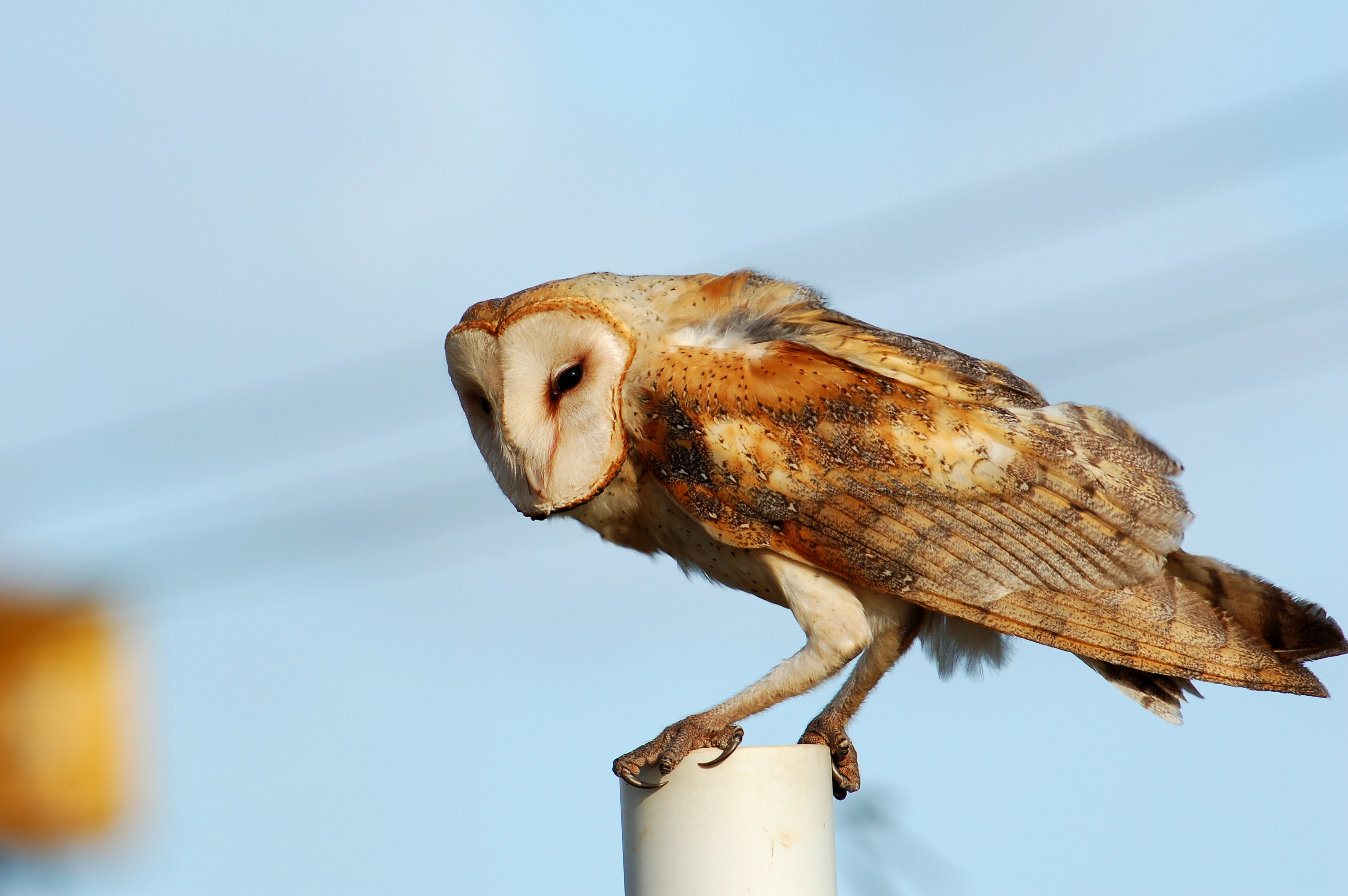
Order:
StrigiformesFamily:
Tytonidae
Barn owl
The barn owl (''Tyto alba'') is the most widely distributed species of owl in the world and one of the most widespread of all species of birds, being found almost everywhere except for the polar and desert regions, Asia north of the Himalaya ...
s are medium to large owls with large heads and characteristic heart-shaped faces. They have long strong legs with powerful talons. There are 16 species worldwide and 2 species which occur in Fiji.
Kingfishers

Order:
CoraciiformesFamily:
Alcedinidae
Kingfishers are medium-sized birds with large heads, long, pointed bills, short legs and stubby tails.
Falcons
Order:
FalconiformesFamily:
Falconidae
The falcons and caracaras are around 60 species of diurnal birds of prey that make up the family Falconidae (representing all extant species in the order Falconiformes). The family is divided into three subfamilies, Herpetotherinae, which inclu ...
Falconidae is a family of diurnal birds of prey. They differ from hawks, eagles and kites in that they kill with their beaks instead of their talons.
Old World parrots
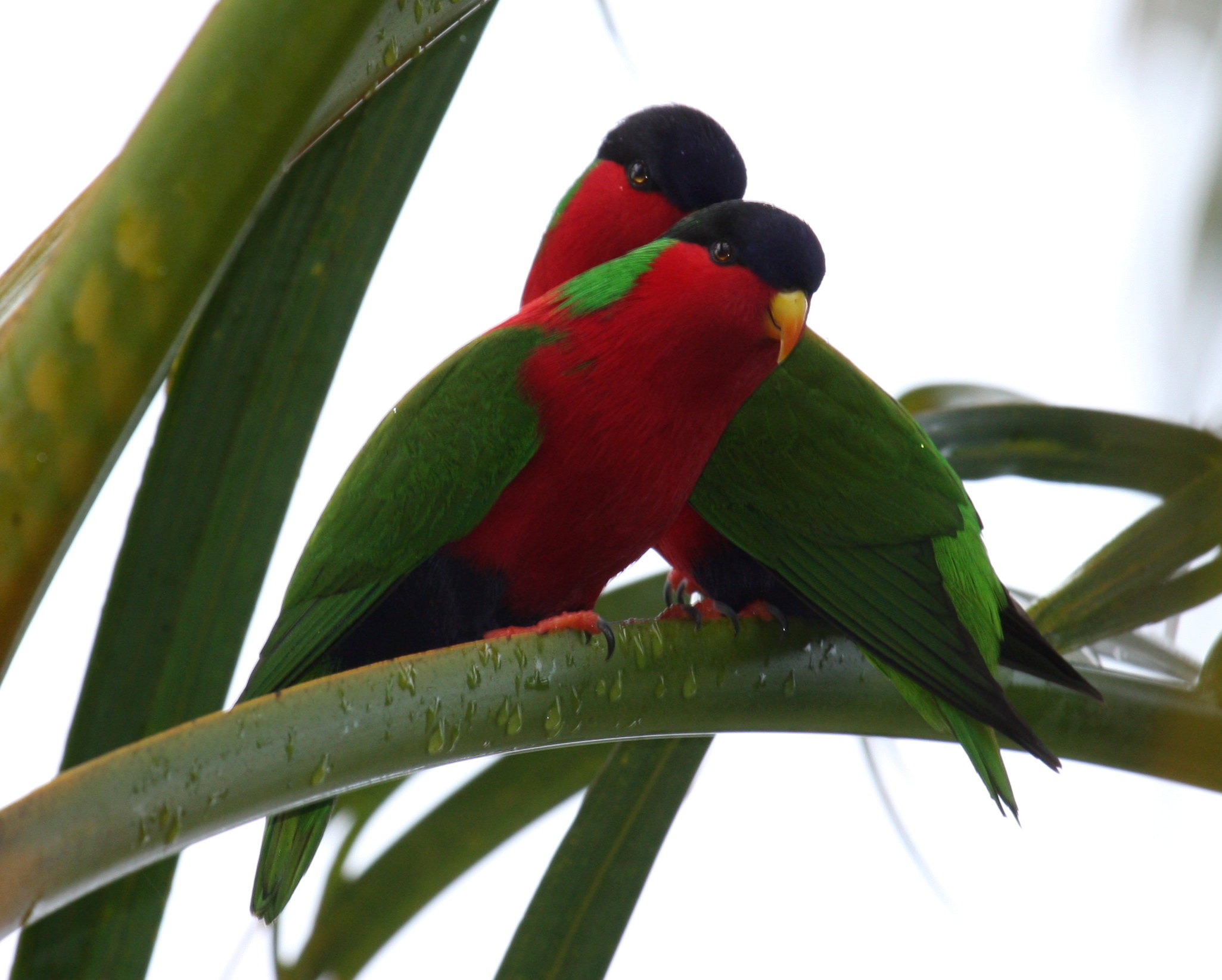
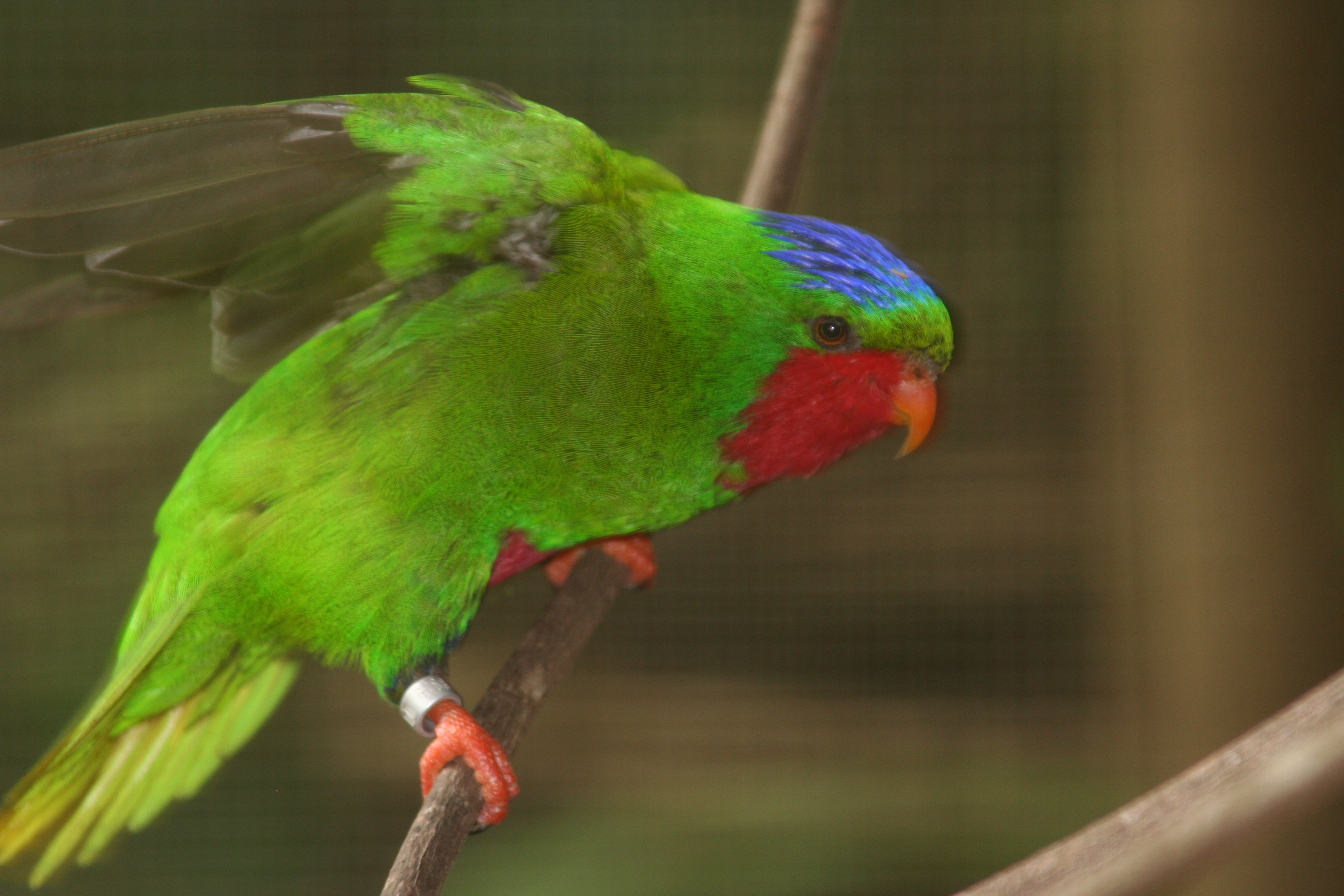
Order:
PsittaciformesFamily:
Psittaculidae
Characteristic features of parrots include a strong curved bill, an upright stance, strong legs, and clawed
zygodactyl feet. Many parrots are vividly coloured, and some are multi-coloured. In size they range from to in length. Old World parrots are found from Africa east across south and southeast Asia and Oceania to Australia and New Zealand.
Honeyeaters
Order:
PasseriformesFamily:
Meliphagidae
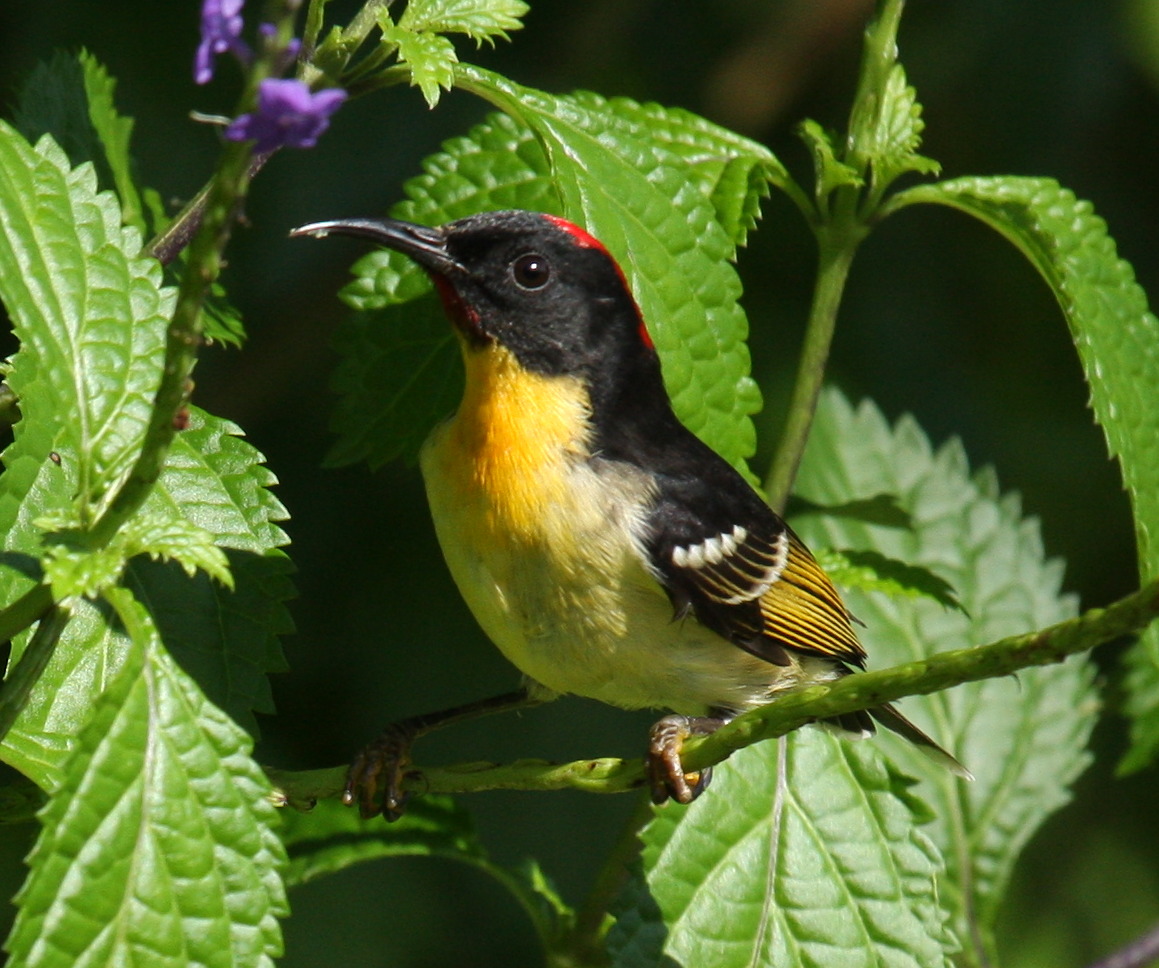
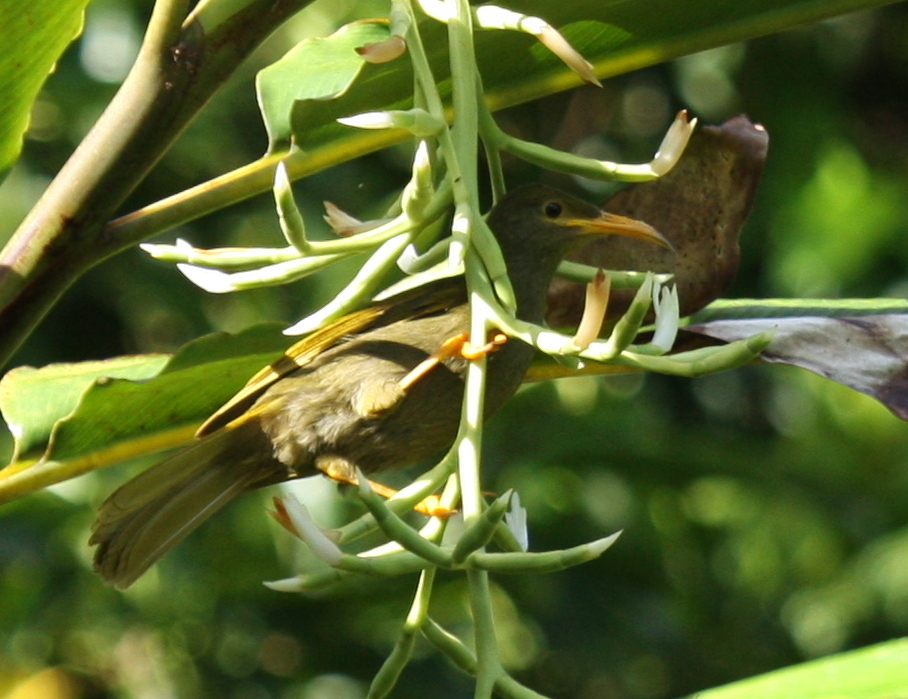
The honeyeaters are a large and diverse family of small to medium-sized birds most common in Australia and New Guinea. They are nectar feeders and closely resemble other nectar-feeding passerines.
Cuckooshrikes

Order:
PasseriformesFamily:
Campephagidae
The cuckooshrikes are small to medium-sized passerine birds. They are predominantly greyish with white and black, although some species are brightly coloured.
Whistlers and allies

Order:
PasseriformesFamily:
Pachycephalidae
The Pachycephalidae are a family of bird species that includes the whistlers, shrikethrushes, and three of the pitohuis, and is part of the ancient Australo-Papuan radiation of songbirds. The family includes 64 species that are separated into f ...
The family Pachycephalidae includes the whistlers, shrikethrushes, and some of the pitohuis.
Woodswallows, bellmagpies, and allies
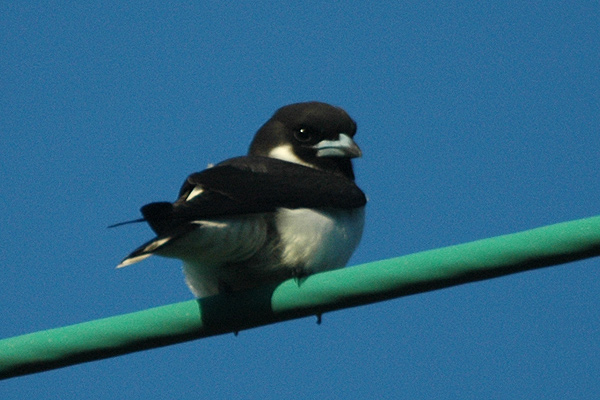
Order:
PasseriformesFamily:
Artamidae
Artamidae is a family of passerine birds found in Australia, the Indo-Pacific region, and Southern Asia. It includes 24 extant species in six genera and three subfamilies: Peltopsinae (with one genus, ''Peltops''), Artaminae (with one genus conta ...
The woodswallows are soft-plumaged, somber-coloured passerine birds. They are smooth, agile flyers with moderately large, semi-triangular wings. The cracticids:
currawongs, bellmagpies and
butcherbird
Butcherbirds are songbirds closely related to the Australian magpie. Most are found in the genus '' Cracticus'', but the black butcherbird is placed in the monotypic genus '' Melloria''. They are native to Australasia.
Taxonomy
Together with th ...
s, are similar to the other corvids. They have large, straight bills and mostly black, white or grey plumage. All are omnivorous to some degree.
Fantails

Order:
PasseriformesFamily:
Rhipiduridae
The fantails are small insectivorous birds which are specialist aerial feeders.
Monarch flycatchers
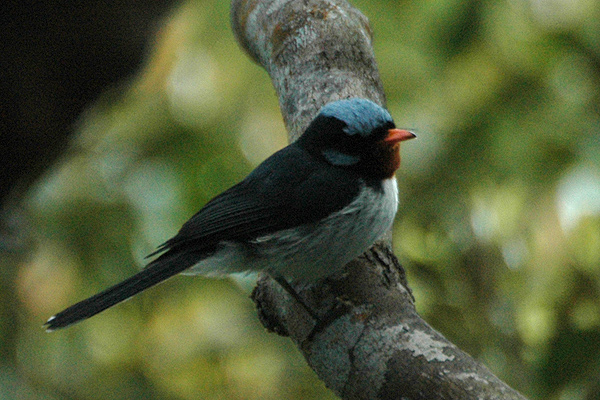

Order:
PasseriformesFamily:
Monarchidae
The monarchs (family Monarchidae) comprise a family of over 100 passerine birds which includes shrikebills, paradise flycatchers, and magpie-larks.
Monarchids are small insectivorous songbirds with long tails. They inhabit forest or woodland a ...
The monarch flycatchers are small to medium-sized insectivorous passerines which hunt by flycatching.
Australasian robins

Order:
PasseriformesFamily:
Petroicidae
Most species of Petroicidae have a stocky build with a large rounded head, a short straight bill and rounded wingtips. They occupy a wide range of wooded habitats, from subalpine to tropical rainforest, and mangrove swamp to semi-arid scrubland. All are primarily insectivores, although a few supplement their diet with seeds.
Grassbirds and allies
Order:
PasseriformesFamily:
Locustellidae
Locustellidae is a newly recognized family of small insectivorous songbirds ("warblers"), formerly placed in the Old World warbler "wastebin" family. It contains the grass warblers, grassbirds, and the ''Bradypterus'' "bush warblers". These bird ...
Locustellidae are a family of small insectivorous songbirds found mainly in Eurasia, Africa, and the Australian region. They are smallish birds with tails that are usually long and pointed, and tend to be drab brownish or buffy all over.
Swallows

Order:
PasseriformesFamily:
Hirundinidae
The family Hirundinidae is adapted to aerial feeding. They have a slender streamlined body, long pointed wings and a short bill with a wide gape. The feet are adapted to perching rather than walking, and the front toes are partially joined at the base.
Bulbuls
Order:
PasseriformesFamily:
Pycnonotidae
Bulbuls are medium-sized songbirds. Some are colourful with yellow, red or orange vents, cheeks, throats or supercilia, but most are drab, with uniform olive-brown to black plumage. Some species have distinct crests.
Bush warblers and allies
Order:
PasseriformesFamily:
Scotocercidae
The members of this family are found throughout Africa, Asia, and Polynesia. Their taxonomy is in flux, and some authorities place some genera in other families.
[Gill, F. and D. Donsker (Eds). 2019. IOC World Bird List (v 9.2). . http://www.worldbirdnames.org/ retrieved 22 June 2019.]
White-eyes, yuhinas, and allies

Order:
PasseriformesFamily:
Zosteropidae
The white-eyes are small and mostly undistinguished, their plumage above being generally some dull colour like greenish-olive, but some species have a white or bright yellow throat, breast or lower parts, and several have buff flanks. As their name suggests, many species have a white ring around each eye.
Starlings

Order:
PasseriformesFamily:
Sturnidae
Starlings are small to medium-sized passerine birds. Their flight is strong and direct and they are very gregarious. Their preferred habitat is fairly open country. They eat insects and fruit. Plumage is typically dark with a metallic sheen.
Thrushes and allies
Order:
PasseriformesFamily:
Turdidae
The
thrushes are a group of passerine birds that occur mainly in the Old World. They are plump, soft plumaged, small to medium-sized insectivores or sometimes omnivores, often feeding on the ground. Many have attractive songs.
Waxbills and allies

Order:
PasseriformesFamily:
Estrildidae
The
estrildid finches are small passerine birds of the Old World tropics and
Australasia. They are gregarious and often colonial seed eaters with short thick but pointed bills. They are all similar in structure and habits, but have wide variation in plumage colours and patterns.
Old World sparrows
Order:
PasseriformesFamily:
Passeridae
Old World sparrows are small passerine birds. In general, sparrows tend to be small, plump, brown or grey birds with short tails and short powerful beaks. Sparrows are seed eaters, but they also consume small insects.
See also
*
List of birds
This article lists living orders and families of birds. The links below should then lead to family accounts and hence to individual species.
The passerines (perching birds) alone account for well over 5,000 species. In total there are about 1 ...
*
Lists of birds by region
References
*
*
* Pratt, H., Bruner, P & Berrett, D. (1987) ''The Birds of Hawaii and the Tropical Pacific''
Princeton University Press: Princeton
* Steadman D, (2006). ''Extinction and Biogeography in Tropical Pacific Birds'',
University of Chicago Press.
Notes
{{Reflist
'
Fiji
Fiji ( , ,; fj, Viti, ; Fiji Hindi: फ़िजी, ''Fijī''), officially the Republic of Fiji, is an island country in Melanesia, part of Oceania in the South Pacific Ocean. It lies about north-northeast of New Zealand. Fiji consists ...
birds
Birds are a group of warm-blooded vertebrates constituting the class Aves (), characterised by feathers, toothless beaked jaws, the laying of hard-shelled eggs, a high metabolic rate, a four-chambered heart, and a strong yet lightweigh ...
 The avifauna of
The avifauna of  Order:
Order:  Order: GalliformesFamily:
Order: GalliformesFamily: 
 Order: ColumbiformesFamily: Columbidae
Pigeons and doves are stout-bodied birds with short necks and short slender bills with a fleshy cere.
Order: ColumbiformesFamily: Columbidae
Pigeons and doves are stout-bodied birds with short necks and short slender bills with a fleshy cere.
 Order: CaprimulgiformesFamily: Apodidae
Swifts are small birds which spend the majority of their lives flying. These birds have very short legs and never settle voluntarily on the ground, perching instead only on vertical surfaces. Many swifts have long swept-back wings which resemble a crescent or boomerang.
Order: CaprimulgiformesFamily: Apodidae
Swifts are small birds which spend the majority of their lives flying. These birds have very short legs and never settle voluntarily on the ground, perching instead only on vertical surfaces. Many swifts have long swept-back wings which resemble a crescent or boomerang.
 Order:
Order:  Order: CharadriiformesFamily: Charadriidae
The family Charadriidae includes the plovers, dotterels and lapwings. They are small to medium-sized birds with compact bodies, short, thick necks and long, usually pointed, wings. They are found in open country worldwide, mostly in habitats near water.
Order: CharadriiformesFamily: Charadriidae
The family Charadriidae includes the plovers, dotterels and lapwings. They are small to medium-sized birds with compact bodies, short, thick necks and long, usually pointed, wings. They are found in open country worldwide, mostly in habitats near water.
 Order: CharadriiformesFamily: Scolopacidae
Scolopacidae is a large diverse family of small to medium-sized shorebirds including the sandpipers, curlews, godwits, shanks, tattlers, woodcocks, snipes, dowitchers and phalaropes. The majority of these species eat small invertebrates picked out of the mud or soil. Variation in length of legs and bills enables multiple species to feed in the same habitat, particularly on the coast, without direct competition for food.
Order: CharadriiformesFamily: Scolopacidae
Scolopacidae is a large diverse family of small to medium-sized shorebirds including the sandpipers, curlews, godwits, shanks, tattlers, woodcocks, snipes, dowitchers and phalaropes. The majority of these species eat small invertebrates picked out of the mud or soil. Variation in length of legs and bills enables multiple species to feed in the same habitat, particularly on the coast, without direct competition for food.
 Order: CharadriiformesFamily: Stercorariidae
The family Stercorariidae are, in general, medium to large birds, typically with grey or brown plumage, often with white markings on the wings. They nest on the ground in temperate and arctic regions and are long-distance migrants.
Order: CharadriiformesFamily: Stercorariidae
The family Stercorariidae are, in general, medium to large birds, typically with grey or brown plumage, often with white markings on the wings. They nest on the ground in temperate and arctic regions and are long-distance migrants.
 Order: CharadriiformesFamily: Laridae
Laridae is a family of medium to large seabirds, the gulls, terns, and
Order: CharadriiformesFamily: Laridae
Laridae is a family of medium to large seabirds, the gulls, terns, and  Order: PhaethontiformesFamily: Phaethontidae
Tropicbirds are slender white birds of tropical oceans, with exceptionally long central tail feathers. Their heads and long wings have black markings.
Order: PhaethontiformesFamily: Phaethontidae
Tropicbirds are slender white birds of tropical oceans, with exceptionally long central tail feathers. Their heads and long wings have black markings.
 Order: ProcellariiformesFamily: Oceanitidae
The southern storm-petrels are relatives of the petrels and are the smallest seabirds. They feed on planktonic crustaceans and small fish picked from the surface, typically while hovering. The flight is fluttering and sometimes bat-like.
Order: ProcellariiformesFamily: Oceanitidae
The southern storm-petrels are relatives of the petrels and are the smallest seabirds. They feed on planktonic crustaceans and small fish picked from the surface, typically while hovering. The flight is fluttering and sometimes bat-like.

 Order: PelecaniformesFamily: Ardeidae
The family Ardeidae contains the bitterns,
Order: PelecaniformesFamily: Ardeidae
The family Ardeidae contains the bitterns,  Order: StrigiformesFamily: Tytonidae
Order: StrigiformesFamily: Tytonidae
 Order: CoraciiformesFamily: Alcedinidae
Kingfishers are medium-sized birds with large heads, long, pointed bills, short legs and stubby tails.
Order: CoraciiformesFamily: Alcedinidae
Kingfishers are medium-sized birds with large heads, long, pointed bills, short legs and stubby tails.
 Order: PasseriformesFamily: Campephagidae
The cuckooshrikes are small to medium-sized passerine birds. They are predominantly greyish with white and black, although some species are brightly coloured.
Order: PasseriformesFamily: Campephagidae
The cuckooshrikes are small to medium-sized passerine birds. They are predominantly greyish with white and black, although some species are brightly coloured.
 Order: PasseriformesFamily:
Order: PasseriformesFamily: 
 Order: PasseriformesFamily:
Order: PasseriformesFamily:  Order: PasseriformesFamily: Hirundinidae
The family Hirundinidae is adapted to aerial feeding. They have a slender streamlined body, long pointed wings and a short bill with a wide gape. The feet are adapted to perching rather than walking, and the front toes are partially joined at the base.
Order: PasseriformesFamily: Hirundinidae
The family Hirundinidae is adapted to aerial feeding. They have a slender streamlined body, long pointed wings and a short bill with a wide gape. The feet are adapted to perching rather than walking, and the front toes are partially joined at the base.